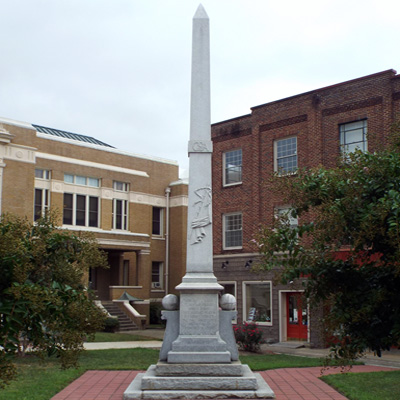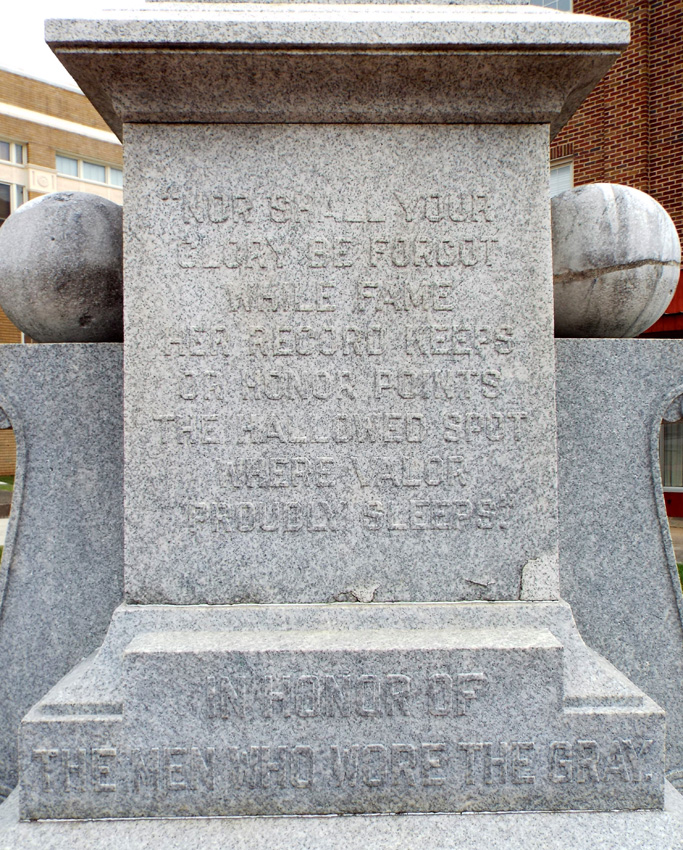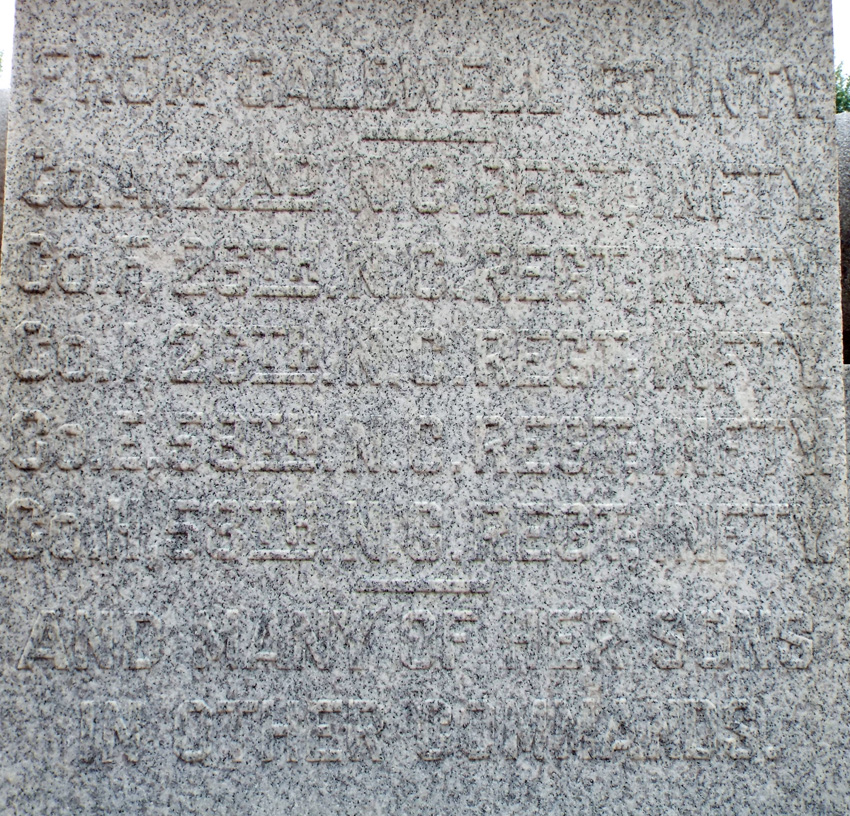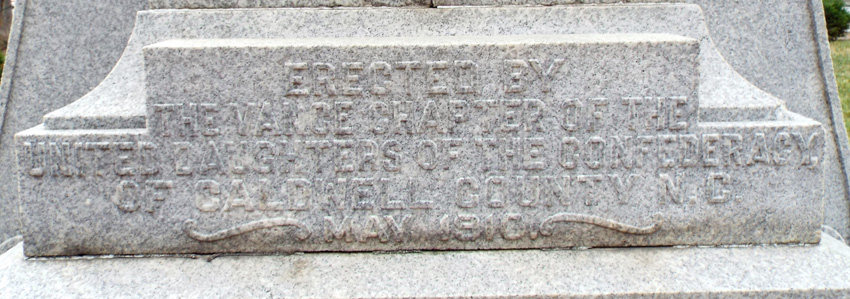
The granite monument consists of a base with an obelisk on top standing 35 ft. tall in total. The north and south sides of the base have inscriptions, one being from the poem “Bivouac Of The Dead” and the other listing the regiments from Caldwell County. The east and west sides of the base each have an attached pedestal with a carved cannon ball. On the lower section of the obelisk’s north face is a furled Confederate battle flag in relief. On the obelisk’s south face, a stand of arms is carved in relief. Above these elements is a belt course with CSA, 1861, UDC and 1865 on the four sides. Stanzas from the poem “The Bivouac of the Dead” by Theodore O’Hara appear on the north face.
Additional Notes
Walter Clark at age 14 became the youngest Major in the Confederate Army. During the era of monument building in the early decades of the 20th century Clark became one of the most sought out monument dedication orators. He delivered six such speeches, three of which have survived. He was considered the states preeminent Civil War historian. He edited the five-volume Histories of the Several Regiments and Battalions from North Carolina in the Great War 1861-’65 published in 1901 chaired the 1904 North Carolina Literary and Historical Association Committee that produced Five Points in the Record of North Carolina in the Great War of 1861-5.
“The Bivouac of the Dead” by Theodore O’Hara is an elegiac poem that expresses feelings of melancholy, sorrow or lamentation—especially for a person or persons who are dead. Although O’Hara wrote “Bivouac” as a remembrance of the many casualties suffered in the Mexican War by the Second Kentucky Regiment of Foot Volunteers it seemed to capture the attention of a patriotic nation after the Civil War. It began to appear in various forms at Civil War battlefields and cemeteries across the county, including the first monument placed in North Carolina at Cross Creek Cemetery inFayetteville, in Lumberton, and Goldsboro.
Additional Photos



